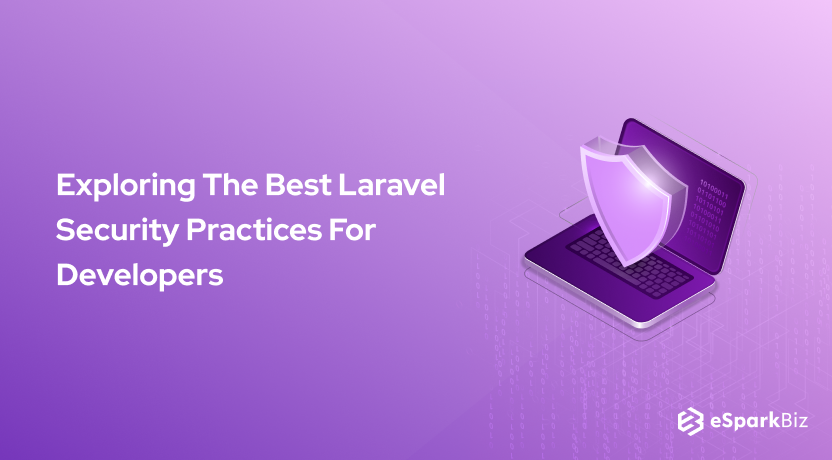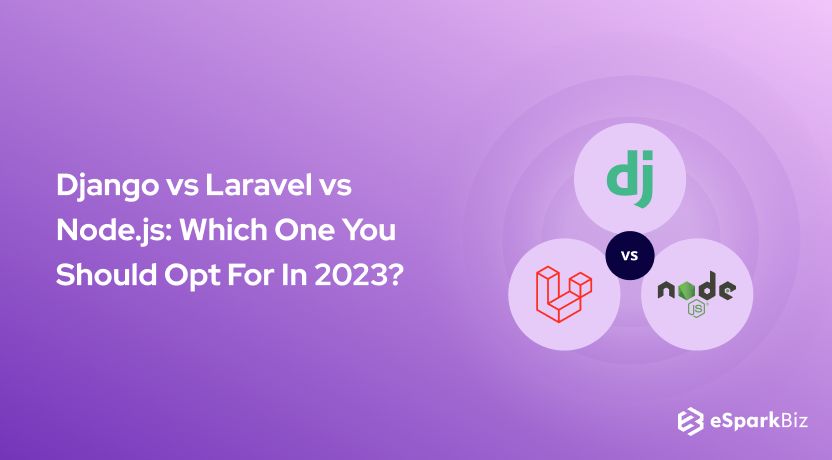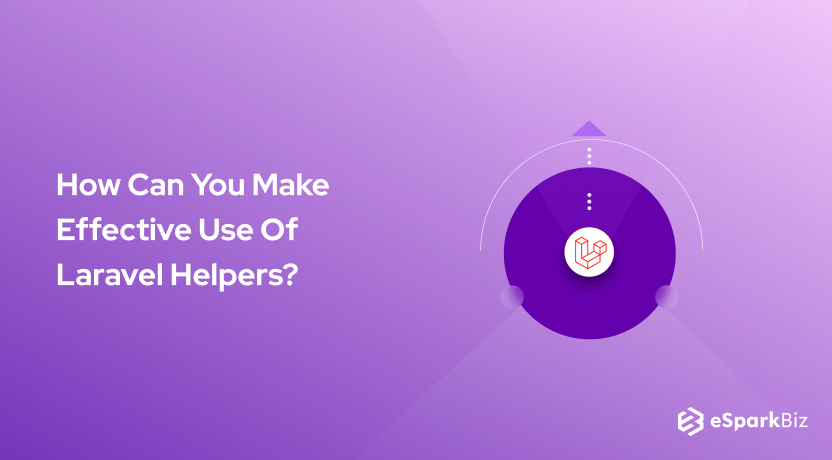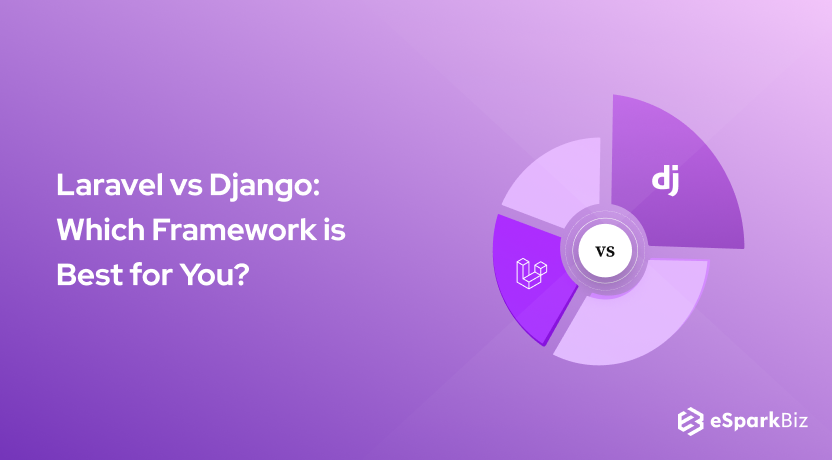In the world of web development, Laravel is a popular open-source platform for the PHP framework that both performs well and is user-friendly. Today, we will talk about Laravel Security Practices in detail.
It is used to improve the development process of websites and apps and includes built-in features for faster integration. Owing to its ultra-powerful modular packaging arrangement and brilliant features, it is a certain favorite for many Top Notch Laravel Application Development Company.
Security is truly one of the major concerns while developing a project and therefore it may require core expertise with the technology stack as well as its security functionalities, so to cut down all the security concerns, do hire remote developers India and achieve potential secure end-solutions.
Focusing on the features that are compatible with your security demands would help you highly in this regard. The following are some of the most notable complications developers come across, and how to combat them.
Best Tips For Laravel Security
Laravel Authentication System
In the subject of Laravel Authentication Security, this framework is quite effective, and the scaffolding has connected boilerplate coding in it.
To work this process the way it is supposed to, Laravel uses ‘guards’ and ‘providers’ as its tools. To specify, the former focuses on assessing and authenticating users each time they make a request. Features Of Laravel 7 also supports this fact.
Simultaneously, the latter assists in bringing the users back from the database. The work of a developer is simply to set up the controllers, databases, and models. While this is working, the authentication features start linking to the app on its own.
Thus, you do not need to put in any extra effort.
Reduce Laravel Vulnerabilities From CSRF

For the purpose of protecting the system from third parties trying to generate faulty requests externally, Laravel Security utilizes CSRF tokens.
Whenever a request form comes via the AJAX call, this platform creates and then combines an appropriate token into it.
When this occurs, the Laravel Security Scanner tries to figure out if the saved request during a user’s session is the same second time around.
In case the token is not a match, the security features invalidate the request automatically and cancel the command.
Protection Against XSS

As a matter of fact, the pre-fitted Laravel Security Packages does help in protecting the system from XSS attacks.
When this happens, the attacks enter the text region using JavaScript codes, like in the comments section in a blog post. For example, the attackers use the following script for malicious intent:
<script>alert("You are hacked")</script>
While the given code is not entirely malicious, the lack of proper XSS protection would leave the system vulnerable.
Therefore, whenever a new visitor opens the affected page, the JavaScript would reload and that would cause system immunity problems.
In this concern, the native support of the Laravel Security includes built-in features that start up and safeguard the database. Thereafter, the structure outputs any code with escape tags as regular HTML.
SQL Injection

One of the possible issues that can affect the system is an SQL injection. And the presence of the Eloquent ORM in Laravel uses PDO binding to protect from SQL Injection.
Accordingly, no one can modify the SQL queries’ intent as per their wish. To elaborate, when a form searches for a person’s email address, and one uses a modified SQL query, it would bring forth all the table records.
Hackers can improvise another attack directly putting the query in and modifying it. For example, using the command like “drop table users”;
and accordingly, the system would delete the table “users” automatically. With the help of a parameter binding of PDO or an unprocessed SQL query, this would not take place.
That’s why Laravel is the Best PHP Framework of all time.
Improve Laravel App Security
While Laravel Security is already robust and gritty, taking steps to make it more secure would improve the PHP framework highly. They are as follow:
Force HTTPS to stop information exchange
Using HTTPS instead of HTTP is better when deploying information like passwords as the HTTP turns the code into plain text. This is easier to steal for hackers and taking the help of Laravel developers to change the format is essential.
Avoid Raw queries for SQL Injection protection
Aside from using PDO binding for protection against SQL injection, many developers rely on raw SQL too. In this case, it is best to utilize those queries which are well-prepared beforehand.
Removing the question marks and then placing a query variable is what Laravel Security applies, in order to escape input variables.
Enhance Security with Laravel Purifier
In order to yield an HTML variable from the database to a customer, a Laravel Purifier would fix your code up properly. Plus, it would handle any missing or omitted HTML codes as well.
Prevent XSS by escaping content
You can use a double brace type of syntax inside the blade templates to escape XSS attacks. However, the variable within the syntax is displayed, and you should use this only if you are sure about the safety of it.
Laravel Security Packages
Among the Laravel Security Packages, the following are some of the best available options.
Laravel-ACL
Laravel-ACL package protects controller methods like CRUD and routes in applications, and assures a good authentication process through role-bammmmm,m,m,m,m,m,m,m,m,m,m,m,m,m,m,m,m,m,m,m,m,m,m,m,m,m,bsed warranted permissions.
Plus, to validate the security status, this package further uses voters with the purpose of scanning role-based privileges.
Laravel Security
For removing any vulnerability of the XSS from the codebase, Laravel Security is an important package. There is currently Laravel 5 from Codeigniter 3 in this framework.
Laravel Security Component
In order to combine Laravel with the security core of Symfony and protect objects/roles, this package is necessary.
Filter & Validate All Data
It is crucial to filter all data and then validate them for optimal Laravel Security, and the Eloquent ORM is one helpful feature.
It utilizes the parameter binding of PDO to work against SQL injections. Plus, there are other manners that the Laravel framework uses to craft these SQL queries as well.
In terms of why you need to validate data is because faulty SQL queries can come through any data. Some of them are the server environment, configuration files, POST, and GET, among many others.
Invalidate Sessions When Required
Another important factor one must focus on in regards to Laravel Security is managing the PHP sessions.
This is due to the fact that most of the errors can occur if the framework is not protected. And any big change in the application state can leave the framework open to attack factors.
Some of the major areas of concern in this regard are password update or change, or any security errors.
Thus, it is important to destroy and invalidate the session automatically, and if you can hire laravel developer they will provide you the best Laravel Security.
Store Password Using Hashing Functions

In any web development scheme, password protection is a service that developers need to worry about.
While Laravel has a good security system feature in this regard, there are some other measures developers can practice.
Usually, the present hash mechanism in Laravel, in its native form, uses Argon2 and Bcrypt. With the help of the latter, its strong hashing functions protect the sensitive data and all passwords properly for optimum Laravel Security.
Thus, you should use it and make sure that all of these data are accurately hashed. Plus, you should take note not to use any hashing functions that are weak, like SHA1 or MD5 as they would not perform adequately.
Check SSL/TLS Configuration
In the question of optimum Laravel Security, it is important for you to scan it every day. One of the main things that you should focus on is if the SSL/TLS configuration in your server is accurately configured and up to date.
Not to mention, make sure you are not using an old TLS version and no weak ciphers either. You can also read the Guide To Hire Laravel Developers. With the help of that, you can easily achieve this thing.
Plus, you should focus on using authentic security certificates and not use weak keys along with it. There are many more issues you may come across, and scanning regularly would help you recognize the problem areas promptly.
Rate Limit Request
When one brutally tries to force any login attacks, that can inadvertently overwhelm and weaken the forms.
In order to protect against Laravel Security Issues, one thing that developers focus on is stopping such actions with the help of setting limits.
Thus, with the use of tools like Fail2Ban, Laravel developers can protect the forms by bringing down the request throttles to an acceptable level.
Log All The Things
One of the most important things to do for Laravel protection is to log in at all times. You may face issues like debugging information, password resets, or fail to log in over many attempts.
Yet, it is important that you do so and there is a mature package ready that you can utilize for that.
It is Monolog and it provides users an easy-to-use experience. To elaborate, it sends your log data to inboxes, files, databases, sockets, and many web services.
Send All Available Security Headers
In the question of supplying optimum Laravel Security, there are many security headers that are available.
Using these, the web-based applications or websites that you are creating is easy to make and incredibly secure.
Plus, it does not require a lot of effort either, which is always a plus. It is important for you to configure each perfectly with your request responses.
There are five main types available and they are as follows:
X-Frame Options
This header is usable in terms of avoiding click-jacking attacks and protects your content from embedding to other sites. It specifies to the clients if rendering another page is applicable in a <object>, <iframe>, or <frame>.
X-XSS-Protection
Another major issue that you would face is from attack vectors like XSS. These headers help with this part of Laravel Security.
HSTS
This version of a security header only works with an HTTPS, and cannot work with an HTTP format. It includes the HSTS preload list that is applicable for future builds of browsers and it determines if the site is compatible with an HTTPS request.
Content Security Policy
The CSP header is used to prevent the incorporation of any malicious content inside the HTML framework. With its help, you can limit the content loading rules and allow only those from the previously-used domain to avoid Laravel Security Issues.
X-Content-Type-Options

In order to stop the sniffing of the MIME type, the X-Content-Type-Options headers are crucial. It informs users which MIME types are most useful and deserve respect, and is utilized in the server.
Also Read: Exploring the Key Features of Laravel 7 Framework
Have A Content Security Policy

In the case of protecting the platform and subsequently the web development process, you can use a CSP or Content Security Policy.
It works with different types of websites that you may develop, whether it is a web-based application or a static website.
The CSP is a highly profitable tool in the matter of Laravel Security, as it works against common attack issues like an XSS.
One can easily utilize it through factors like extension documentation of Google Chrome and web docs of MDN. In terms of maintaining a stable and secure Laravel framework, this feature is a great boost.
Cookies Protection
Another prominent security feature for handling Laravel Security Issues that Laravel focuses on is cookie protection. That’s where Laravel Helper Functions can be of great use.
Indeed, you need to create and then use an encryption key or application key and Laravel would ensure the cookies are strongly protected. Of course, how this works depends on the version of Laravel you are using.
In case you are using versions 3 and older, you should input said key in the file, application.php present in the directory, config. In the case of versions 5 or more, open the config folder and enter the key into the file named app.php.
Conclusion
All in all, Laravel is one of the most powerful PHP frameworks out in the tech world for the purpose of web development. And a big reason for that is the amount of great and useful features that it comes equipped with.
Laravel Security is, thus, not highly complex to ensure suitable protection, given the presence of so many pre-existing security features.
Of course, as a developer, you can opt to add more features, but even without doing so, the system can function well.
They are easy to utilize and guarantee systematic protection against many attack factors and are well tested beforehand.
Overall, you can implement it in your web developing work, and following the given points would assure better user compatibility.
-
Why Should I Update Laravel Security?
The reason for continuously updating Laravel Security is to make sure that your app is threat free and it can tackle any complex challenge.
-
What Kind Of Web Security Does Laravel Have?
Laravel has an in-built authentication and authorization system. Using that, it protects the app from any kind of mischievous attacks.
-
Can Laravel Be Hacked?
The simple answer to this question would YES. If you can get access to the .env file in Laravel, you can hack the system.
-
What Is Remember Me In Laravel?
Remember Me passes the cookies to the user if they return to the site where they’re automatically validated.
-
What Is A Guest In Laravel?
It’s a Laravel - Guest User Gates. It’s a new feature introduced after the release of Laravel 5.7. It initiates an authentication process for specific users.
-
What Is Bcrypt In Laravel?
Bcrypt is a function that is used for storing passwords.








